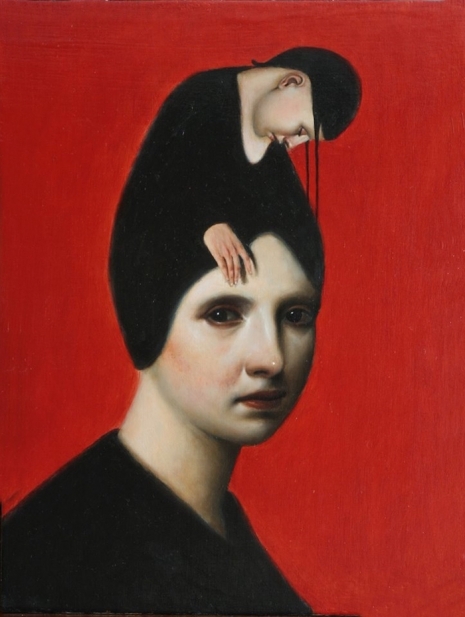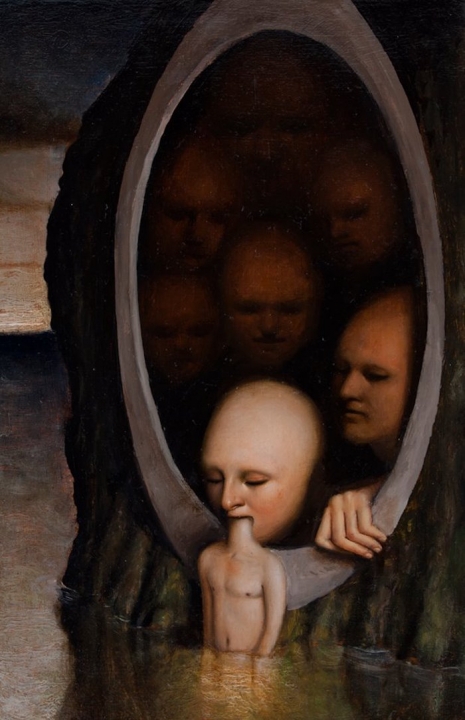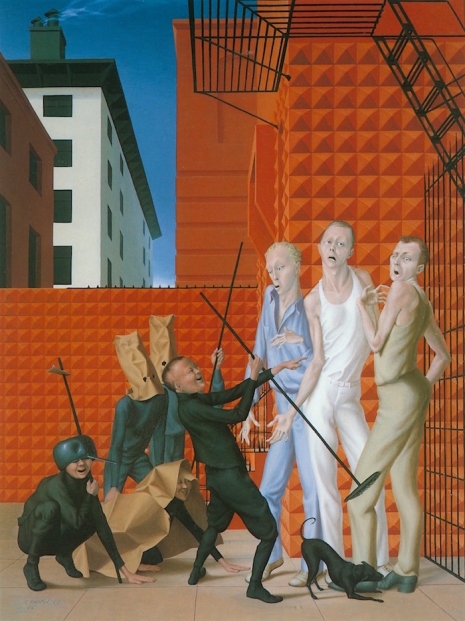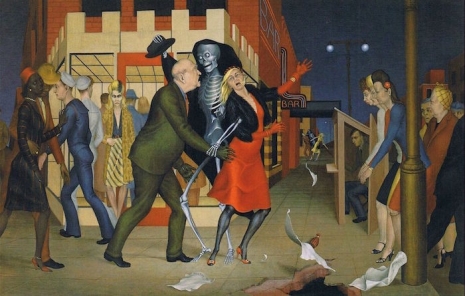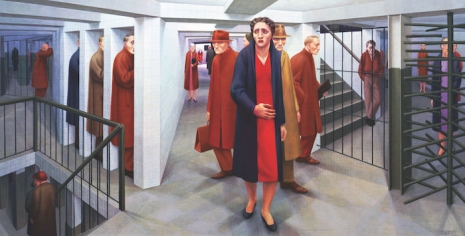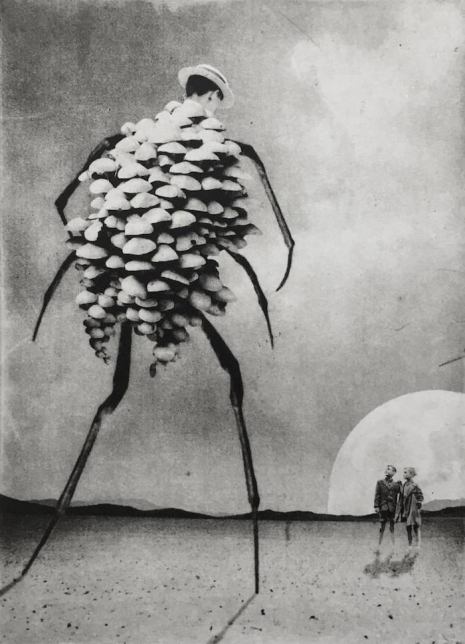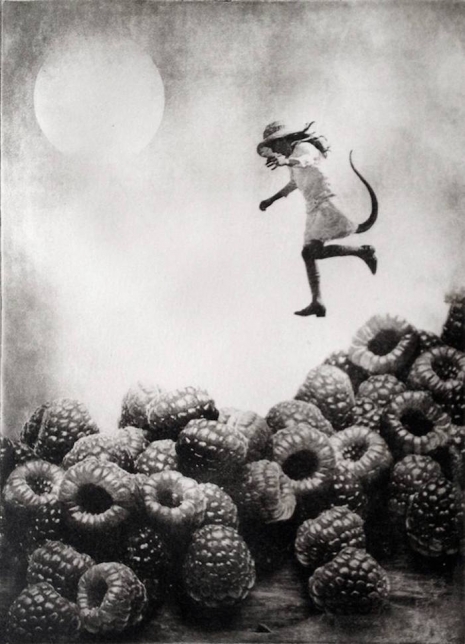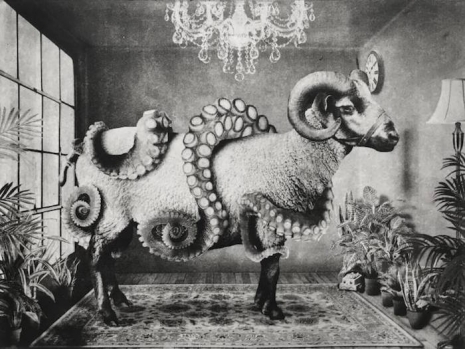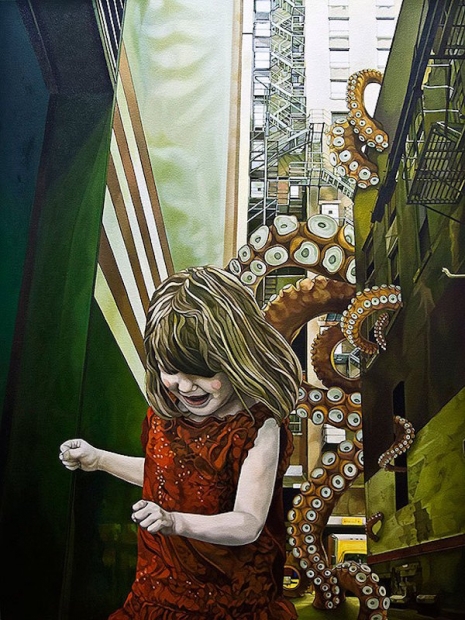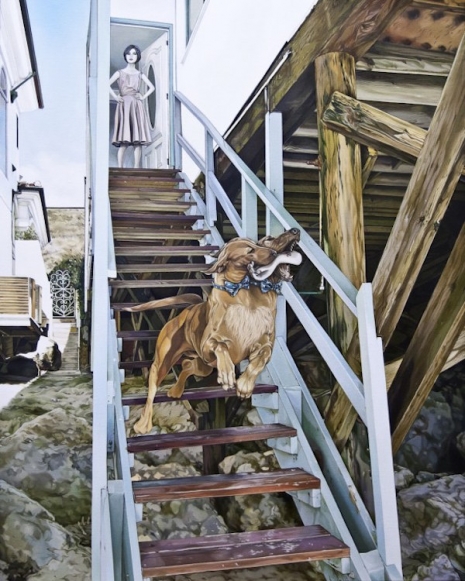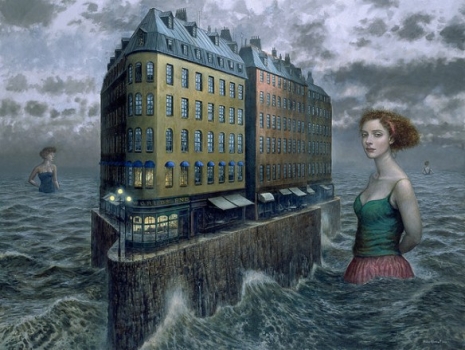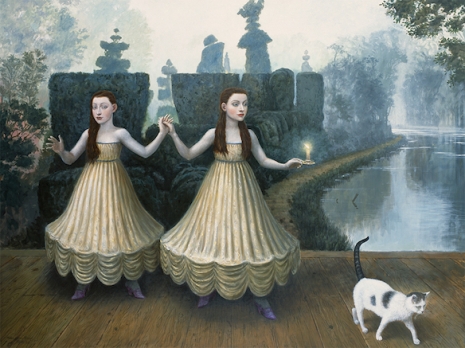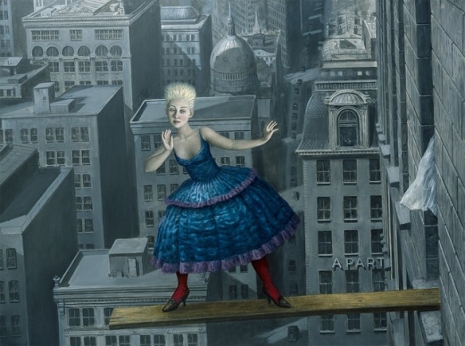
‘The Grotto at St. Michel.’
A winged subterranean creature fires out of a mountain cave to release, or is it perhaps to devour, a golden bird—or the symbol for the Holy Spirit?—against a blue winter sky. A man in Victorian dress, accompanied by his daughter, cheer the beast on. It looks like some mountain scene Caspar David Friedrich started painting only for Theodor Kittelsen or maybe Félicien Rops to finish it.
And then there is the unwary traveler (huntsman), riding through a cold winter wood, when he is quickly, silently eaten by a monstrous white eel rushing downhill like an avalanche.
Or, the boy in short trousers entering (what looks like) a drained swimming pool room where a monstrous creature, like a bloated dust mite or mutated bed bug waits. Strange shadowy figures peer into the windows above.
These are three paintings by the brilliant Canadian artist Peter Ferguson, whose work disturbs, amuses, and excites like the greatest illustrations from the best book of adventure tales.
I looked to find out more about Ferguson but all I found was the same words used and reused on different sites lifted from the artist’s press release. Then there is his work, which brilliant and beautiful, and strangely unsettling. It has been described as “meticulously painted,” “luminous,” “grandiose,” “humorous,” “paranormal,” “fantasy, surrealism, and realism,” and often described as a cross between Norman Rockwell and H. P. Lovecraft. All of which is true. Technically he is brilliant and his imagination unparalleled. But a lack of the artist’s comment forces the viewer to look at his work without any preconceived notions as to the artist’s intention or the work’s meaning.
We’re fast awake and seeing dreams which we fill with our own peculiar narrative. The ambiguity of Ferguson’s paintings allows us to do so—a tale that reflects our own fears and obsessions. Are the creatures in his paintings innocent victims or truly monstrous? Are the humans good or evil?
Born in Montreal, Canada in 1968, Ferguson was first inspired to draw spaceships and alien creatures after he saw the movie Star Wars as a boy. He decided on becoming an illustrator and attended the Ontario College of Art and Design in Toronto, graduating in 1992. Ferguson then began a long and brilliant career as illustrator working in oils for companies as diverse as Marvel, the Royal Shakespeare Company, MOJO, the Wall Street Journal, and the Washington Times. Since the turn of century, Ferguson has been exhibiting his brilliant paintings in group and solo shows. His work is quite literally what dreams are made of. And if I had the money, I’d buy a dozen of his paintings to hang on my walls because I know that everyday I would look at Ferguson’s pictures and see something different, think something different, and know something different about myself.
A new exhibition of Peter Ferguson’s work Skip Forward When Held has just opened at the Roq la Rue Gallery in Seattle, details here. Or check more by this highly original and gifted artist here.

‘Pastoral.’

‘The Engineer Jules Bernhardt.’
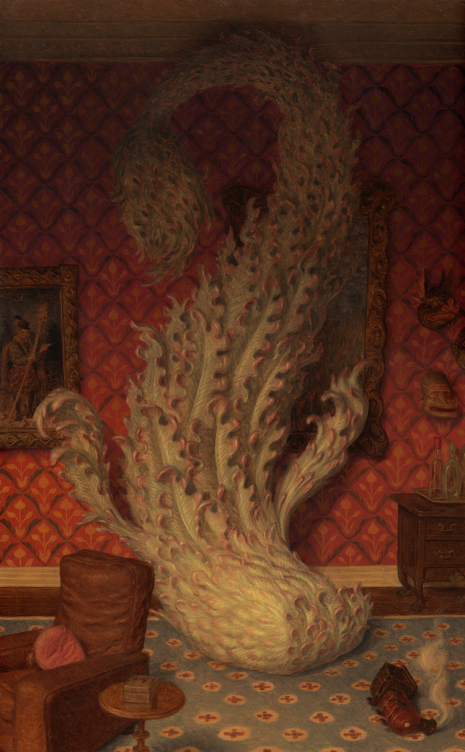
‘Mayfair Parlour Shark.’
See more of Peter Ferguson’s brilliant work, after the jump…






